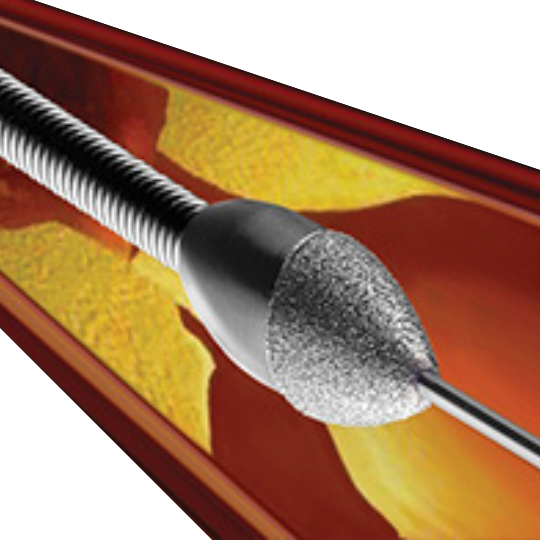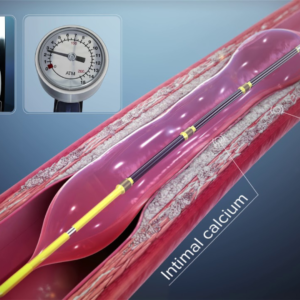- +91 83103 67685
- info@drameetoswal.com
- Basavanagudi
Rotablation and IVL-guided angioplasty are two different ways of carrying out a reductive angioplasty.

Best Rotabalation Procedure in Bangalore | Rotational Atherectomy is a therapy performed with a small rotating diamond tipped catheter which is used to open a blocked artery with heavy calcium and revamp the flow of blood to the heart. Often a stent (a tiny tube composed of metal mesh) is inserted in the artery to keep it from re-narrowing.

IVL (stands for Intravascular Lithotripsy) involves using a percutaneous device to produce acoustic pressure waves (shockwaves) resulting in the delivery of sufficient energy to break up superficial and deep calcium deposits.
When Do I Need Rotablation or IVL-Guided Angioplasty?
Buildup of calcium in the artery walls for a prolonged period of time can cause the plaque to become extremely rigid and hard. Sometimes, the plaque becomes too hard and calcified for an angioplasty balloon to widen the artery open. You may be a good candidate for angioplasty if you have a significant blockage of a coronary artery, or you have symptoms of CAD (Coronary Artery Disease). Some of the indications might be :
If you have any such symptoms, the doctor might suggest an angioplasty with the above-mentioned methods
It is used to break down hard calcified blockages in the arteries of your heart. It can either be through a rotating diamond tipped catheter or shockwave lithotripsy (IVL). Some of the common symptoms that might suggest this medical treatment are:
Both Rotablation and IVL-guided angioplasty are minimally invasive procedures used to unblock arteries and restore normal blood flow to the heart. This surgery is usually done under conscious or minor sedation.
Shockwave intravascular lithotripsy (IVL) has evolved as a new modality to treat heavily calcified coronary arteries. IVL involves using a percutaneous device to produce acoustic pressure waves resulting in the delivery of sufficient energy to break up superficial and deep calcium deposits.
These procedures are useful in the treatment of coronary heart disease in patients with angina pectoris. Over time, plaque, a fatty substance made of cholesterol, calcium and other materials tends to build up in the arteries. This leads to partial or complete choking of that artery, resulting either in a heart attack, stroke or obstructions in the blood vessels of the legs causing pain. These procedures help resurrect the artery and restore normal blood flow.
It is essentially a drilling technique done with the help of a special diamond tip burr, which rotates at a speed of 150,000 to 200,000 rotations per minute. This drilling technique clears the inside of the arteries to help pass the balloon and stent easily.
An electrical discharge from the probe emitters vaporizes the fluid within the balloon, creating a rapidly expanding & collapsing bubble that generates sonic pressure waves. That helps to break down unwanted plaque in the arteries.
Yes, both of these methods are proven safe, minimally invasive and FDA approved.
Subscribe our newsletter for latest information in the field of cardiology
WhatsApp us